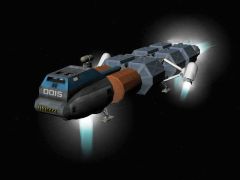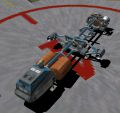Difference between revisions of "Shuttle-A"
(Added more explanation on why the Shuttle-A is better in vacuum environment.) |
(Fixed typo.) |
||
| (7 intermediate revisions by the same user not shown) | |||
| Line 50: | Line 50: | ||
by a hatch during atmospheric flight. | by a hatch during atmospheric flight. | ||
| + | <gallery> | ||
| + | ShuttleAOrbiter2001.jpg|<center>Shuttle-A in Orbiter 2001</center> | ||
| + | ShuttleA-orbiter2002p3.jpg|<center>Shuttle-A in Orbiter 2002P3</center> | ||
| + | ShuttleA-Orbiter2003P2.jpg|<center>Shuttle-A in Orbiter 2003P2</center> | ||
| + | ShuttleA-Orbiter2005P1.jpg|<center>Shuttle-A in Orbiter 2005P1</center> | ||
| + | ShuttleA-Orbiter2006P1.jpg|<center>Shuttle-A in Orbiter 2006P1</center> | ||
| + | ShuttleA-Orbiter2010P1-Orbiter2010P1.jpg|<center>Shuttle-A in Orbiter 2010P1</center> | ||
| + | </gallery> | ||
| + | |||
| + | [[Category: Articles]] | ||
[[Category:Vessels of Orbiter]] | [[Category:Vessels of Orbiter]] | ||
Latest revision as of 03:20, 4 November 2024
| Shuttle-A | |
|---|---|

| |
| Shuttle-A | |
| Description | |
| Role | Low gravity/low pressure cargo hauler |
| Full name | Shuttle-A |
| Crew | 2 |
| Passengers | none |
| First flight | date unknown |
| Entered service | date unknown |
| Manufacturer | unknown |
| Dimensions | |
| Length | 35.0 m |
| Height | 6.98 m |
| Wingspan | 15.4 m |
| Wing area | |
| Masses | |
| Empty | 22,000 kg |
| Fuel | 16,000 kg |
| RCS fuel | 700 kg |
| Max. take-off | 38,700 kg |
| Inertia PMI | 86.6/89.8/5.5 m2 |
| Performance | |
| Max. delta-v | 16.4 km/s |
| Max. accel | 23.0 m/s2 |
| Stall CL | |
| Stall AOA | |
The Shuttle-A is a cargo vessel designed for a low gravity/low pressure operational environment. Its primary area of deployment is for transport duty between LEO, the Moon, Mars, and potentially moons in the outer solar system. In its current configuration it is also capable of achieving orbit from Earth's surface, but this requires a precise ascent profile. Due to its design it is not aerodynamic nor does it provide any lift such as other spacecraft such as the Delta-glider. This means maneuvers in atmosphere are very difficult.
The engine layout consists of a set of two main engines, two hover engines, and two engines in central side pods which can be rotated for hover or retro duty. There are two different propellant systems for main and RCS engines.
The Shuttle-A contains a docking port and airlock below the habitat module which is protected by a hatch during atmospheric flight.





